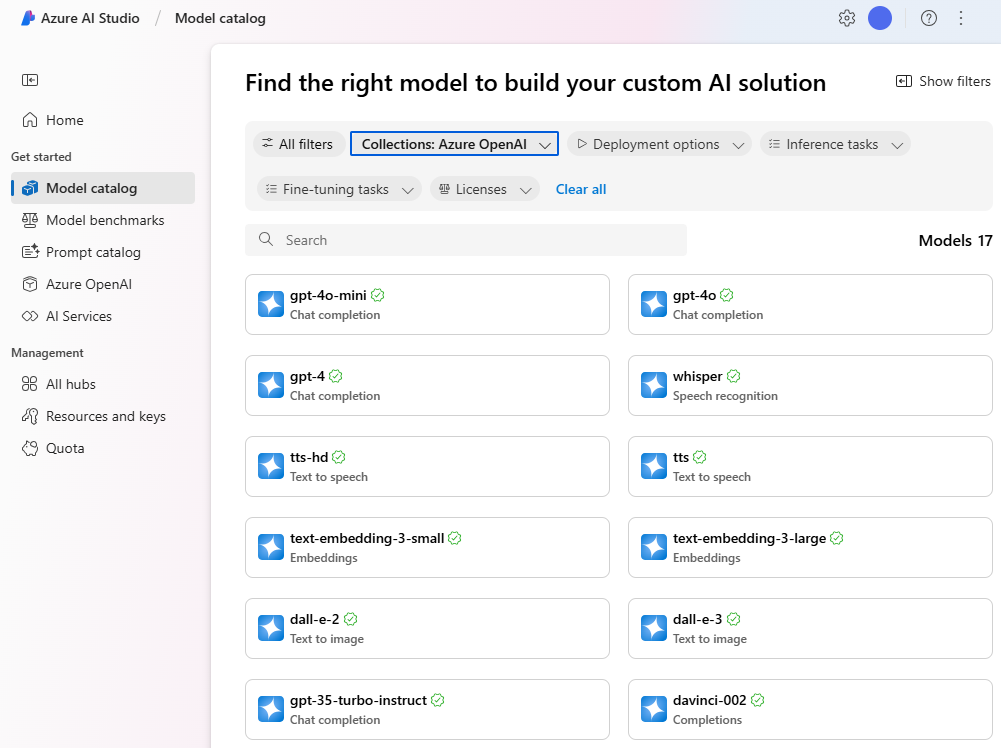Explore types of generative AI models
To begin building with Azure OpenAI, you need to choose a base model and deploy it. Microsoft provides base models and the option to create customized base models. This module covers the currently available base models.
Azure OpenAI includes several types of model:
- GPT-4 models are the latest generation of generative pretrained (GPT) models that can generate natural language and code completions based on natural language prompts.
- GPT 3.5 models can generate natural language and code completions based on natural language prompts. In particular, GPT-35-turbo models are optimized for chat-based interactions and work well in most generative AI scenarios.
- Embeddings models convert text into numeric vectors, and are useful in language analytics scenarios such as comparing text sources for similarities.
- DALL-E models are used to generate images based on natural language prompts. Currently, DALL-E models are in preview. DALL-E models aren't listed in the Azure AI Studio interface and don't need to be explicitly deployed.
Models differ by speed, cost, and how well they complete specific tasks. You can learn more about the differences and latest models offered in the Azure OpenAI Service documentation.
Note
Pricing is determined by tokens and by model type. Learn more about the latest pricing here.
In the Azure AI Studio, the Model Catalog page lists the available base models and provides an option to create additional customized models by fine-tuning the base models. The models that have a Succeeded status mean they're successfully trained and can be selected for deployment.
You'll notice that there are various models beyond OpenAI available in the Model Catalog, including models from Microsoft, Meta, Mistral, and more. Azure AI Studio enables you to deploy any of these models for your use case. This module will focus on Azure OpenAI models.
